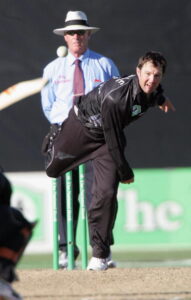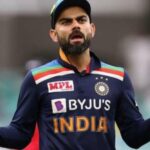“If you are a fast bowler, you are there to bowl fast and knock the stumps over and hit the batsman” quoted Australian great Brett Lee during his playing days. In today’s Cricketing circle which is giggle batsman stereotyped, the most underrated species are the bowlers, especially the pace attack. Pacers or the so-called Fast bowlers have aggression, a style of their own. They run in before every delivery, take the delivery stride and then release those lightening deliveries towards the batsmen. Fast bowlers have always had their say in close encounters as they gave the secret weapon called a yorker, which is the most lethal delivery at any point in time in a cricket match.
As a fast bowler, you gotta regularly touch 140+ mph speed levels along with amazing ball control and pressure handling temperament. We have seen many players bowl lightning fast with utmost accuracy like Trent Boult, Mitchell Johnson, etc. But in the recent history of Cricket, we have seen many fast bowlers who have now turned into fast-medium ones have lowered their pace focus more on the swing and still as lethal as before. Also, there are bowlers like Bhuvneshvar Kumar who relied on swing earlier, but with time although his swing depreciated he worked on his pace, slower ones and also the missile guided yorkers. These bowlers weren’t part-time bowlers, many medium-fast bowlers bowl daily always complete their quota of overs with minimal runs and crucial wickets to add to their tally.
One of the prime examples for the same can be South African bowler Hansie Cronje. Cronje did not have the so-called sheer pace while bowling, but his strong shoulders ensured that he generated the much-needed bounce off the pitch. Also, his bowling style generates swing and movement off the pitch making things tougher for the batsman. The legendary Sachin Tendulkar once quoted “Hansie Cronje was the toughest bowler to face” in a press conference and his figures against Cronje suggest the same, showing the South African bowlers sheer domination. India was defeated for the first time in a NatWest series, where Ronnie Irani the batsman scored a brilliant half-century in the first innings but that was not all, he returned to haunt India in the second innings where he bowled beautiful deliveries to get a fifer and an eventual Man of the Match. He was the man behind bug wickets like Sehwag, Ganguly, etc. and also took the final catch which sealed the series for England.
Then there were classy English bowlers Mark Ealham and Paul Collingwood. Mark was a master of bowling disguise. His quirky bowling and perfect line/length ensured the batsman had a tough time batting against him. He has a One-day international record against his name as he is the only bowler to have taken a fifer with all the wickets in the form of LBW’s. Paul Collingwood was another medium-fast bowler who knew the art of deciphering batsman’s weaknesses and getting wickets at the right times. He was a natural athlete, had a tight run-up and bowled quick spells tightening up things for the bowlers to come. Owing to his sharp bowling he ensured that the strike bowlers in the team, got the wickets the team needed and he emerged as the unsung hero for England in many matches.
Nathan Astle was one of Kiwis’ best players of his generation who in 2013 held the record for New Zealand’s highest run-getter. He ensured that he added to his batting prowess, his bowling skill chipping in with wickets as and when required. He had 154 wickets in his bag in the international circuit owing to some amazing medium pace bowling especially the reverse swingers that were his specialty. Sri Lankan fast bowler Chaminda Vaas , was one of their spearhead bowlers in the peak of his career but with time his pace went down. Although the speed was less, he improvised by hitting sharp line and length’s, swinging deliveries which made him as lethal as he was when he had the sheer pace behind his deliveries.
Zimbabwean fast bowler Douglas Hondo had also mastered the art of Medium paced bowling. He bowled a very famous spell against India where he took 4 wickets although Mohammed Kaif went on to score a century in the match. His four wickets included wickets like Dinesh Mongia, VVS Laxman among others. Steve Waugh was another elite example of fast-medium bowlers. He used to bowl a lot in the first half of his career and was the golden arm of the Australian team. His arrival always bought a wicket for the team. He hit the right track and also had a pretty strong shoulder which helped him get the bounce off the pitch. Modern-day bowler, Colin degrand homme who is a medium-paced bowler with a short run up and some hint of swing. He is not too much swing bowler which makes it more dangerous for the batsman as the little swing and movement often get the outside edge of batsman bat. In the recently going India vs New Zealand test series, he dismissed Virat Kohli owing to his sharp lines and length’s which shows how accurate and sharp he is with his bowling.
All these prove that a reduced pace does not always mean a decrease in the leathalness of the bowler. Although the speed goes down, the swing, action, line, and length can still ensure an on-point delivery. Players are focusing more on technique than pace and even getting converted to medium paced from a pace bowler to enter the elite club of medium pacers. This is a huge positive for the future of cricket and medium pacers are surely here to stay.
Stay tuned.





